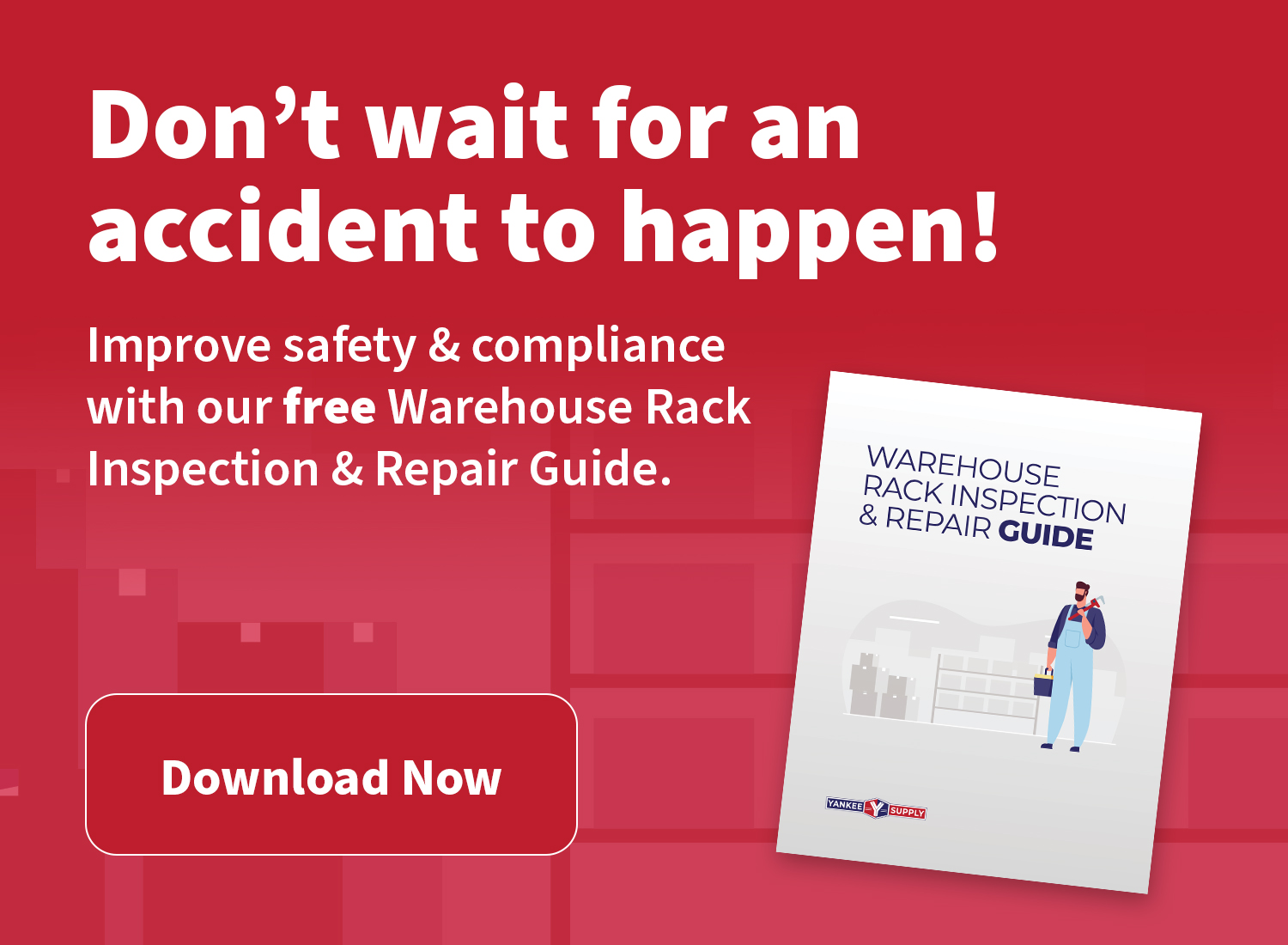Winter brings not just a chill to the air but also a host of challenges for warehouse loading docks. As temperatures drop, the efficiency and safety of these crucial spaces are put to the test. In this guide, we'll unravel the significance of having a winterize warehouse, navigating through the obstacles that the season presents.
The icy grip of winter can transform loading docks into potential hazard zones. Snow, ice, and freezing temperatures pose a unique set of challenges that can hamper operations, compromise safety, and impact equipment functionality. It's during this season that the importance of proactive measures becomes glaringly evident.
But amidst these challenges lies an opportunity. By preparing your loading docks for the colder season, you not only mitigate risks but also unlock a range of benefits. From streamlined operations to enhanced safety protocols, the rewards of winterization extend far beyond just weathering the storm.
Why a Winterize Warehouse Matters
Winterizing your loading docks isn't a mere precaution; it's a strategic move to safeguard your operations and assets. The biting cold and frosty conditions of winter introduce risks that go beyond the obvious. Operations face disruptions as icy conditions slow down loading and unloading processes. Safety takes center stage, with the heightened risk of slips, falls, and accidents. Equipment, too, bears the brunt, with the potential for malfunctions and damage.
The impact on operations can be profound. Delays due to weather-related challenges translate into lost time and revenue. Safety incidents not only affect the well-being of employees but also lead to increased insurance claims and potential legal consequences. Equipment breakdowns, prompted by the harsh conditions, can result in costly repairs and downtimes.
Winterizing Your Loading Docks
Now that we've underscored the gravity of the situation, let's delve into how you can fortify your loading docks against winter's onslaught. Think of it as a proactive shield against the season's challenges, ensuring that your operations stay robust, safe, and efficient. As we navigate through the following sections, we'll explore key strategies and tools, each playing a crucial role in the comprehensive winterization of your loading docks.
This guide isn't just about weathering the winter—it's about thriving in it. Join us on this journey as we equip your loading docks to face the cold head-on, emerging not just unscathed but fortified for peak performance in the frostiest of conditions.
Dock Seals and Shelters
To fortify your loading docks against the winter elements, the strategic integration of dock seals and shelters emerges as a frontline defense. These components play a pivotal role in creating a barrier between your valuable cargo and the harsh outdoor conditions.
Dock seals snugly fit around the perimeter of the trailer when it's docked, acting as a tight seal. They come in various materials, from foam to inflatable, each tailored to withstand the cold and ensure a secure environment within the loading dock area. By forming an airtight seal, these devices prevent the infiltration of cold air and precipitation, maintaining a controlled climate inside the dock.
The benefits extend beyond climate control. Dock seals enhance energy efficiency by minimizing heat loss, ultimately reducing heating costs during the winter months. Additionally, they contribute to the preservation of goods by preventing exposure to the elements, ensuring that your inventory remains in optimal condition.
Shelters complement the role of seals by providing additional coverage. These structures shield the loading area from rain, snow, and gusty winds. The versatility of shelters lies in their ability to accommodate a variety of truck sizes, ensuring comprehensive protection for diverse fleets.
Brush Seals
When it comes to winterization, the often-overlooked but highly effective brush seals come into play. These flexible, bristle-like strips are strategically placed at the edges of dock doors and other openings. What makes them invaluable in winter conditions is their ability to create a barrier without impeding the movement of personnel or goods.
Brush seals work wonders in preventing the infiltration of cold air, dust, and debris. Their design allows for a gentle yet effective seal, accommodating the movement of trucks and ensuring a secure closure when the dock is not in use. Unlike rigid seals, brush seals adapt to the contours of irregular surfaces, offering a versatile solution for varying dock door configurations.
In the winter context, brush seals act as a formidable defense against drafts and temperature fluctuations. By maintaining a consistent internal temperature, they contribute to energy efficiency and operational comfort. The applications of brush seals extend beyond winter, making them a year-round asset in your loading dock arsenal.
Dock Leveler Seal
Among the unsung heroes of winterization are dock leveler seals. Often overlooked, these components play a crucial role in maintaining the integrity of your loading docks during the colder months.
Dock leveler seals are positioned around the edges of the dock leveler, the pivotal point where the warehouse floor meets the trailer. In winter, this junction becomes vulnerable to the elements, creating a potential entry point for cold air, moisture, and even pests.
The importance of dock leveler seals becomes apparent when considering the prevention of winter issues. These seals act as a barrier, blocking the ingress of cold air and maintaining a stable temperature on both sides of the loading dock. By doing so, they contribute to energy efficiency, reduce heating costs, and protect goods from temperature-related damage.
Air Curtains
Picture a protective shield that seamlessly separates the indoor and outdoor environments without impeding the flow of people and goods—that's the role of air curtains in winterizing your loading docks.
Air curtains are installed above dock doors, creating an invisible barrier of air that acts as a thermal shield. During winter, when dock doors are frequently opened and closed, air curtains become instrumental in maintaining a consistent internal temperature. They achieve this by preventing the intrusion of cold air and the escape of heated air each time the doors are in motion.
The benefits of air curtains extend beyond climate control. By keeping the interior environment stable, they contribute to energy savings, creating a more sustainable and cost-effective solution for winterization. Additionally, air curtains deter the entry of dust, pollutants, and pests, ensuring a clean and efficient loading dock area.
Industrial Ceiling Fans
When it comes to maintaining a consistent temperature in your loading docks during winter, the often-underestimated hero is the industrial ceiling fan. While commonly associated with cooling, these powerful fans play a strategic role in regulating temperatures, ensuring a comfortable and efficient working environment year-round.
Industrial ceiling fans function by circulating air throughout the space. In winter, they help combat the natural tendency of warm air to rise, ensuring an even distribution of heat. This circulation prevents temperature stratification, where the upper regions of the loading dock become significantly warmer than the floor level. By breaking this thermal barrier, industrial ceiling fans contribute to maintaining a stable and comfortable temperature, eliminating cold spots and enhancing overall climate control.
Beyond temperature regulation, these fans offer energy-efficient solutions. By redistributing warm air that accumulates near the ceiling, industrial fans reduce the reliance on heating systems, leading to potential cost savings. Their versatility makes them an indispensable tool for winterization, proving that comfort and efficiency go hand in hand.
Prevent Trailer Creep
Enter the STRONGARM™ SVR303—a robust solution designed to tackle a common issue during winter: trailer creep. As temperatures drop, trailers tend to shift and move, creating potential safety hazards and operational disruptions. The STRONGARM™ SVR303 steps in as a reliable and proactive measure to prevent trailer creep and its associated challenges.
This innovative device is engineered with precision to secure trailers in place during loading and unloading processes. Its role becomes particularly crucial in winter, where icy conditions amplify the risk of trailers unintentionally moving away from the dock. The STRONGARM™ SVR303 acts as a powerful restraint, ensuring trailers stay precisely where they are supposed to be, minimizing the risk of accidents, damage, and delays.
The versatility of the STRONGARM™ SVR303 lies in its ability to accommodate various trailer configurations, providing a tailored and effective solution for winterizing your loading docks. As we navigate the challenges of winter, this tool becomes an invaluable asset, fortifying your operations against the unpredictable nature of trailer movement.
Dock Door Weather Seals
In the intricate tapestry of winterization, dock door weather seals emerge as a vital thread. These seals, often overlooked, play a pivotal role in fortifying your loading docks against the elements, providing a resilient barrier against cold air, moisture, and drafts.
Dock door weather seals are strategically positioned around the edges of dock doors, creating a tight seal when the doors are closed. In winter, when every gap becomes a potential entry point for the chill, these seals act as guardians, preventing the infiltration of cold air and maintaining a controlled internal environment.
The significance of dock door weather seals extends beyond temperature control. By forming a robust barrier, these seals contribute to energy efficiency, minimizing heat loss and reducing the workload on heating systems. They also act as a defense against pests, dust, and debris, ensuring that your loading dock remains a clean and secure space.
Use ResuGrip Non-Slip Floor Coatings
When it comes to winter safety, the ground beneath your feet plays a crucial role. Enter ResuGrip non-slip floor coatings—an essential component in the arsenal of winterization for your loading docks.
Winter brings with it the risk of slippery surfaces, particularly when precipitation meets the cold ground. ResuGrip non-slip floor coatings provide a reliable solution, creating a textured surface that enhances traction and reduces the likelihood of slips and falls. Applied to the loading dock floor, these coatings form a protective layer that withstands the challenges of winter weather.
The advantages of ResuGrip extend beyond safety. These coatings are designed to be durable, providing long-lasting protection against the wear and tear associated with loading and unloading activities. Their weather-resistant properties make them a reliable choice for winter, ensuring that your loading dock remains not only safe but also resilient in the face of adverse weather conditions.
Final Winter Dock Wisdom
As we conclude our exploration of winterizing your warehouse loading docks, it's evident that preparation is the key to navigating the challenges of the colder months. Each component we've discussed—from dock seals and shelters to industrial ceiling fans, the STRONGARM™ SVR303, dock door weather seals, and ResuGrip non-slip floor coatings—plays a crucial role in fortifying your loading docks against the unpredictable nature of winter.
Winterization isn't just a checklist; it's a strategic investment in the resilience and efficiency of your operations. By implementing these measures, you not only mitigate risks and enhance safety but also position your loading docks for peak performance in the frostiest of conditions. As the cold sets in, your loading docks equipped with these winterization strategies become not just functional spaces but pillars of strength, ready to weather the storm.
Remember, the goal is not just survival; it's about thriving in the winter season. By embracing these winterization techniques, you not only protect your assets and maintain operational efficiency but also demonstrate a commitment to the well-being of your workforce.
So, as winter approaches, take the initiative to winterize your loading docks. Implement these strategies, adapt them to your specific needs, and create a robust, winter-ready environment. Your loading docks aren't just a functional part of your facility—they are the gateway to seamless operations, even in the harshest weather conditions.
Stay proactive, stay prepared, and let your winterized loading docks be a testament to your commitment to safety, efficiency, and resilience. Winter may bring its challenges, but with the right strategies in place, your loading docks can rise above, embodying the spirit of adaptability and preparedness.
Here's to a winter season where your loading docks not only endure but thrive.

















